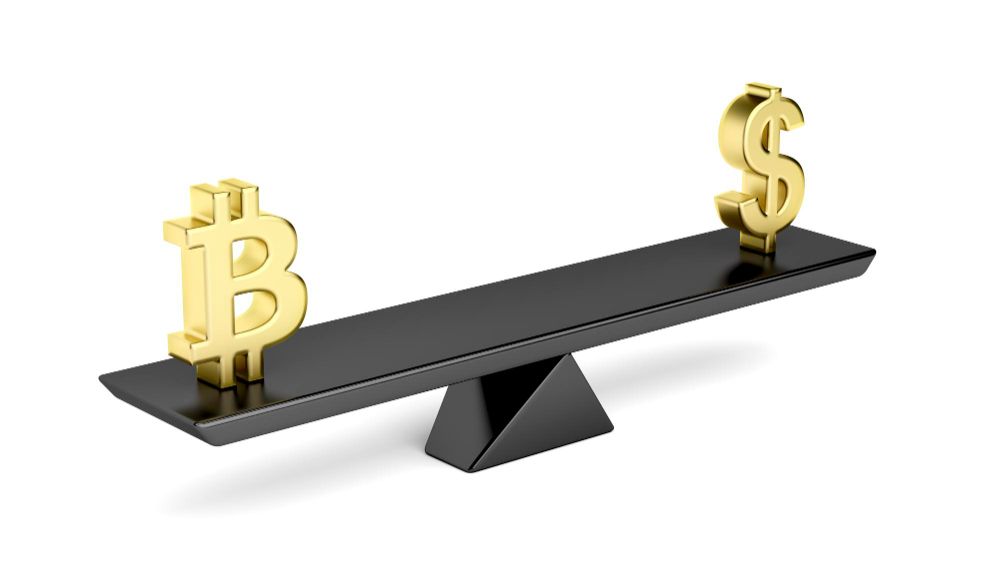USD Index vs. BTC: Is a weak Dollar Good News For Bitcoin?
cryptocurrencies are not affected much as they do not rely much on consumer purchasing power to enjoy increased valuation; instead, they rely on consumer sentiment (which comes from fear and greed).

Conventional knowledge of the traditional market holds that digital assets and financial instruments move in an opposite direction to the Dollar’s strength, most commonly the stock market. This isn’t strange, as the Dollar’s strength is closely watched by investors and traditional market strategists, as it greatly determines the profits of global corporations.
When the U.S. government raises interest rates, people are less incentivized to spend on their credit unless necessary. As a result, the ripple effect affects companies’ profitability since consumers aren’t spending as much as before; in fact, business loans are reduced, and fewer risks are taken in the market.
Typically, the U.S. raises interest rates to avoid inflation which is caused by too many borrowers who may not be able to offset their debts, as happened when the housing bubble burst, which preceded the Great Recession in 2008. Hence, when the interest rates are raised, it signifies that the Economy is moving too fast, and to prevent such bubble bursts, the Government raises the interest rates to cool things off.
Inflation signifies a weak dollar; hence, a move by the Fed to counter inflation by increasing interest rates signifies a weaker dollar.
As a result of these rate hikes and the market’s reaction to them, future cash flow in the traditional market is expected to drop, and stock prices generally fall. Hence, as a general rule of thumb, increased interest rates signify poorer stock prices, and the opposite happens when interest rates are dropped. However, the case is not the same with cryptocurrency.
Effects of The Interest Rate on Crypto Prices
With historical evidence of Bitcoin prices rising during periods of a weaker USD, many have categorized Bitcoin similarly to stocks, claiming that a weak dollar is a good news for Bitcoin and the Crypto market in general. However, the assertion of Bitcoin’s inverse correlation with the U.S. Dollar cannot be said to be “absolutely” true for the crypto market.
Indeed, purchasing power reduces with increased interest rates, and people may not be interested in buying crypto with their credit accounts (which explains the sentiment and existing historical evidence); however, more than just consumer purchasing power, investors’ willingness to buy crypto are primarily influenced by Fear and Greed.
Fear and Greed
“Fear and Greed” in trading or investment indicate the mental state of traders – which shows the high hopes they have for the market or if they are pessimistic about the market’s potential return.
The Fear and Greed index shows the mental state of the average crypto investor, split into: Extreme fear, Fear, Neutral, Greed, and Extreme greed.
In times of extreme fear, the market sentiment to putting money in crypto is usually low; in fact, many cash in on their investments at slight losses or break-even positions. On the contrary, in times of extreme greed, investors throw caution to the wind and aren’t wary of a potential bearish run; they keep launching fresh investments to get the best market returns.
The market prospects determine the levels of Fear and Greed; for example, during sustained bearish periods, the market sentiment moves from greedy to fearful, as many have been wiped out of their positions and need to be fearful. Similarly, the market sentiment will slowly move from fearful to neutral and, eventually, greedy when there are signs of exhausted selling pressure, and the market is in accumulation.
Why The Interest Rate Has Little Impact on Crypto Prices
Publicly-traded traditional companies in the stock market usually see their stock prices drop because investors and market participants anticipate lower profits at the end of the fiscal year; hence, they stop investing further or even cash out their stake.
However, cryptocurrencies are not affected much as they do not rely much on consumer purchasing power to enjoy increased valuation; instead, they rely on consumer sentiment (which comes from fear and greed).
Fed Hikes, Dollar Index, and Crypto 2022
The U.S. has been experiencing a high level of inflation in 2022, with the Federal Open Market Committee (FOMC) increasing the interest rate six times since March, the most recent being the November Hike. However, this hasn't particularly spiked Bitcoin's returns; in fact, Bitcoin is currently experiencing its worst Bear season, having been on a downturn since November 2021.
November marked the worst month for the U.S. Dollar, when it experienced its worst since 2020, losing 7% of its value. This was no surprise, given the Consumer Price Index report for October showed a 7.7% inflation, and consequently, the Fed increased interest rates again in November.
However, all of these had no effect on Bitcoin's price, as it has continued in accumulation for most of November, as seen below.

Bitcoin shows no inverse correlation with the Dollar Index, and despite the Dollar experiencing its worst month since 2020, Bitcoin has made no significant upward movement; in fact, when fear hit the market due to FTX’s turmoil around 6th to 10th November, Bitcoin had a significant loss in value (as circled), and has made no further upwards move, amid a weaker dollar.
Conclusion
Indeed, the Dollar's strength may strongly impact the traditional market and, by extension, traditional investments. However, the crypto market is much more independent of the Dollar's strength, as it mainly moves based on investors' sentiments, which may not always maintain a steady relationship with the U.S. Dollar's strength.
Hence, more than the Dollar index, it is advisable to first consider other metrics in your crypto investment journey to get a qualitative analysis.
For More Beginner Tips, As Well As Detailed Guides On Cryptocurrency And Blockchain Technology, Do Well To Visit The Cwallet Blog (Previously CCTIP Blog) And Follow Our Social Media Communities: